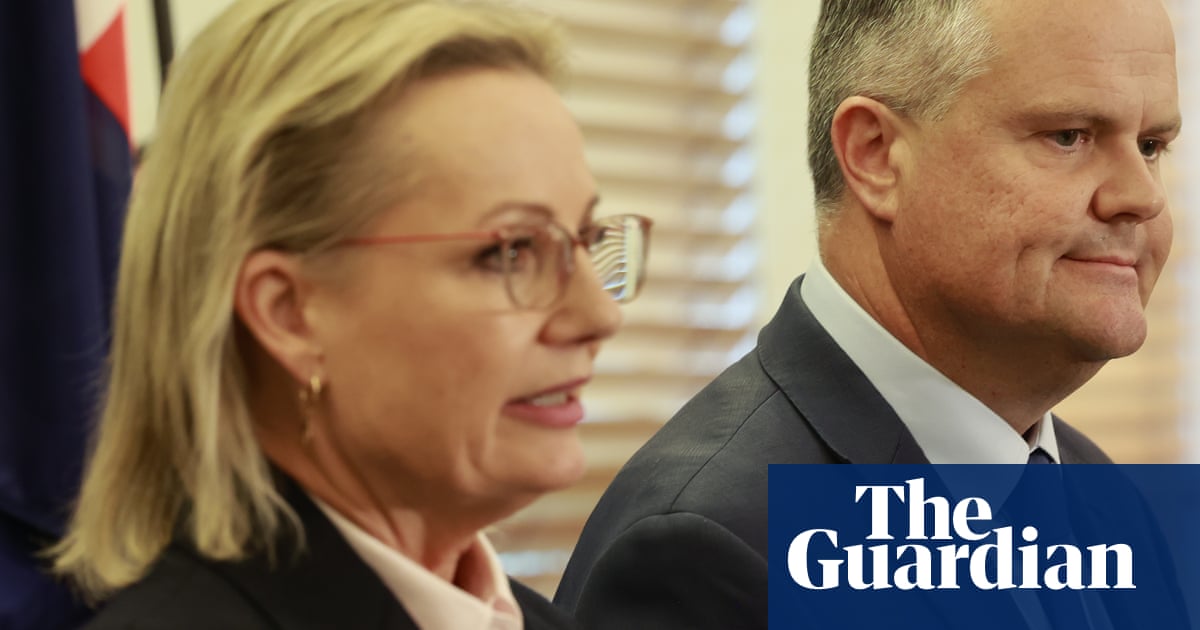A rump of Liberal MPs are fuming over the makeup of the new shadow ministry, warning the perceived rewarding of supporters and sidelining of factional rivals was a “Treaty of Versailles”-type peace deal that would cause long-term unrest.
One Liberal MP said the appointments would “create enemies”, setting up an early challenge for new leaderSussan Leyas she attempts to rebuild the party.
After striking a deal with the Nationals to reunite the Coalition, Ley is facing an internal backlash after dumping senior figures in favour of a new breed of MPs in amajor reshaping of the Peter Dutton-era frontbench.
Liberal sources said the makeup of the frontbench could be viewed as a mix of moderates and people who were “very close” to Ley – such as Alex Hawke – and the “flag bearers” for the party’s right wing, who needed to be retained in senior roles to preserve a degree of factional balance.
This group included Angus Taylor, James Paterson, Andrew Hastie and Michaelia Cash.
Sign up for Guardian Australia’s breaking news email
While the most high-profile demotion, Jane Hume, is from the party’s moderate flank, arguably the biggest losers were the conservatives.
Sarah Henderson was relegated to the backbench whileJacinta Nampijinpa Pricewas demoted to the outer shadow ministry. Claire Chandler will also sit on the backbench after being forced out of shadow cabinet.
Price claimed some of the appointments were not based on “merit”as she expressed disappointment with her demotion on Sky News.
A group of younger conservative MPs, including Henry Pike, Cameron Caldwell and Garth Hamilton, were all overlooked as Ley handed junior portfolios to moderates such as Maria Kovacic, Dave Sharma and Gisele Kapterian,subject to her winning Bradfield.
Other ambitious backbenchers such as Aaron Violi and Simon Kennedy also missed out.
Veteran rightwinger Tony Pasin – a key backroom player in Taylor’s failed leadership tilt – was demoted as expected.
Moderates Tim Wilson, Andrew Bragg and Angie Bell were among the biggest winners after promotions to shadow cabinet.
The reaction to the shadow ministry presents an immediate test for Ley as she tries to rebuild from the 3 May election disaster.
One conservative MP said the shadow ministry was more “Treaty of Versailles than Marshall Plan” – a historical reference used to suggest the appointments would cause ongoing angst.
The Treaty of Versailles was the peace deal between Germany and the allies that followed the first world war. The harsh conditions imposed on Germany were considered to have laid the foundations for the second world war.
The Marshall Plan was the US-led initiative to help rebuild Europe after the second world war.
Sign up toBreaking News Australia
Get the most important news as it breaks
after newsletter promotion
Asked for their view on the shadow ministry, another MP who missed out on a senior role referenced former Liberal prime minister’s Tony Abbott’s old saying about reshuffles.
“The Abbott truism that reshuffles create enemies will live out this term,” they said.
In a blitz of morning television and radio on Thursday, Ley defended her frontbench choices and decision to promote more moderate voices.
Ley called Price “a real talent” and said she had “a new, expanded role” in a critical area.
“I’m excited by the role Jacinta will play in that, and I’ve had a great chat with her about that role and as part of my team, she’s excited to go forward with it,” she told 4BC radio.
Ley on Radio National dodged several questions about Price’s claims that “merit” was not rewarded in the reshuffle, repeatedly declining to address her claims directly.
“She is part of that team. She’s an incredible Australian in terms of her ability to connect. But I’m very proud of my team,” Ley said in response.
Senator James Paterson, the new shadow finance minister, conceded on Radio National that while merit was the most important issue in a frontbench reshuffle, “I’d be lying if I said merit is the only consideration” – calling it a “political process” where leaders had to balance geographical, gender and party room factors.
“I’m disappointed on behalf of Sarah [Henderson], in particular, who did a great job in her portfolio and is a valued colleague as well, and Jacinta, understandably, would have preferred to be in shadow cabinet. We would all like to be in shadow cabinet,” he said.
Asked about future unity in theCoalitionparty room, Paterson said ideas would have to be “robustly tested” inside the party.
Arguably the biggest internal fight for the Coalition this term will be over whether to dump or retain the net zero by 2050 target.
In his latest intervention in the debate, the Nationals senator, Matt Canavan, published a bizarre anime-style video with the tagline “dark Nats rise” and promising to “defeat net zero”.
Accompanied by a song with some lyrics in Japanese, the translation on screen includes lines like “our nation needs a hero to defeat the net zero” and “We rise, we fight, dark Nats burning through the night”, with animation of men destroying wind turbines and solar panels.
